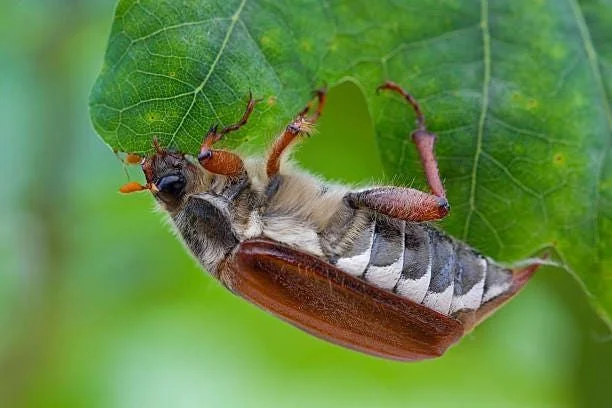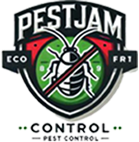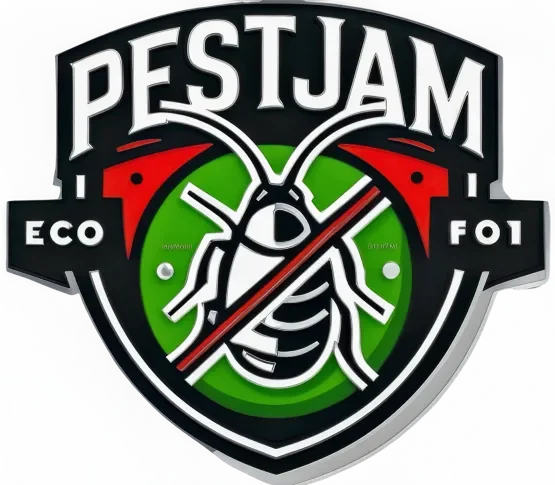The Complete Guide to June Bugs in Canada

What Are June Bugs?
June bugs (also called June beetles or May beetles) are a group of beetles belonging to the Phyllophaga genus. These reddish-brown insects emerge in late spring and early summer across Canada, particularly in Ontario, Quebec, and the Prairie provinces. Adults grow to about 12-25mm long with distinctive velvety wing covers and clumsy flying patterns.
Unlike some pests that stay active year-round, June bugs have a one-year life cycle:
- Adults emerge from soil in late May/June to mate
- Females lay eggs in grassy areas (lawns, fields, golf courses)
- Eggs hatch into white, C-shaped grubs that feed on grass roots
- Grubs overwinter deep in soil before pupating next spring
This cycle means Canadian homeowners often notice two distinct problems:
- Flying adults swarming lights at night in June/July
- Lawn damage from grubs feeding underground in late summer/fall
Signs of a June Bug Problem
Identifying a June bug infestation early helps prevent serious damage. Watch for these telltale signs
Above Ground (Adults)
- Swarming beetles around outdoor lights at dusk
- Buzzing sounds as they fly into windows/doors
- Skeletonized leaves on trees (especially maple, oak, and fruit trees)
Below Ground (Grubs)
- Brown patches in lawn that peel back easily
- Increased bird/raccoon activity (they dig for grubs)
- Spongy turf that feels loose underfoot
In Canadian cities like Toronto, Vancouver, and Calgary, June bug activity typically peaks when evening temperatures consistently stay above 15°C (59°F).
June Bug Damage
Lawn Destruction
Grubs chew through grass roots,creating:
- Dead patches that spread quickly
- Increased weed growth in damaged areas
- Complete lawn loss in severe infestations
Garden & Crop Impacts
Adults feed on:
- Tree leaves (especially maple, birch, and fruit trees)
- Garden plants like corn, strawberries, and roses
- Agricultural crops (a major concern in rural Ontario and Alberta)
Secondary Pest Attraction
Damaged lawns often attract:
- Skunks and raccoons digging for grubs
- Moles and voles tunneling through weakened soil
How to Prevent June Bugs Naturally
Before resorting to chemicals, try these eco-friendly prevention methods:
For Adult June Bugs
- Switch to yellow LED bulbs (less attractive than white lights)
- Install physical barriers like fine mesh netting over gardens
- Plant grub-resistant grasses (tall fescue works well in Canadian climates)
- Encourage natural predators (birds, bats, and toads)
For Grubs
- Maintain healthy soil with proper aeration and drainage
- Water deeply but infrequently (grubs prefer moist soil)
- Apply beneficial nematodes (microscopic worms that kill grubs)
- Use milky spore powder (natural bacteria that targets grubs)
Professional June Bug Control Options
Adult Beetle Treatments
- Residual barrier sprays around home perimeters
- Targeted tree/shrub treatments to protect foliage
- Commercial-grade light traps for severe infestations
Grub Control Programs
- Soil drench applications that stop grubs at early stages
- Late-summer curative treatments for active infestations
- Lawn restoration services to repair damaged turf
Our Canadian pest control experts time treatments based on local emergence patterns:
- Early June in southern Ontario and BC
- Mid-to-late June in Quebec and the Maritimes
- Early July in Alberta and Saskatchewan
June Bug Myths vs. Facts
- Myth: “June bugs bite humans.”
- Fact: They’re harmless to people but may cling to skin/hair when flying.
- Myth: “Only rural areas get June bugs.”
- Fact: Urban Toronto and Vancouver lawns often host grubs.
- Myth: “Winter kills them off.”
- Fact: Grubs survive freezing temps by burrowing deep underground.
When to Call PestJam for June Bugs
Consider professional help if you notice:
- Large sections of dying lawn (over 25% affected)
- Recurring infestations year after year
- Damage spreading to ornamental plants/trees
- Wild animals tearing up your yard for grubs
Our local Canadian technicians provide:




Long-Term June Bug Management Tips
Break the cycle with these season-by-season strategies:
Spring (Pre-Emergence)
- Apply grub preventatives before eggs hatch
- Aerate compacted soil areas
Summer (Adult Season)
- Reduce outdoor lighting at night
- Hand-pick beetles from plants at dawn
Fall (Grub Feeding)
- Treat active grub populations
- Overseed damaged lawn areas
Winter (Planning)
- Map out problem areas for spring treatment
- Schedule early-season soil tests
June Bugs vs. Similar Canadian Pests
Don’t confuse June bugs with:



Proper identification ensures correct treatment – our PestJam experts can help.
Protect Your Canadian Property Today
From Victoria to Halifax, June bugs emerge each summer to threaten lawns and gardens. By understanding their habits and acting proactively, you can minimize damage and enjoy your outdoor spaces all season long.
Pest Jam offers proven June bug solutions across Canada. Contact us today for a free consultation .

